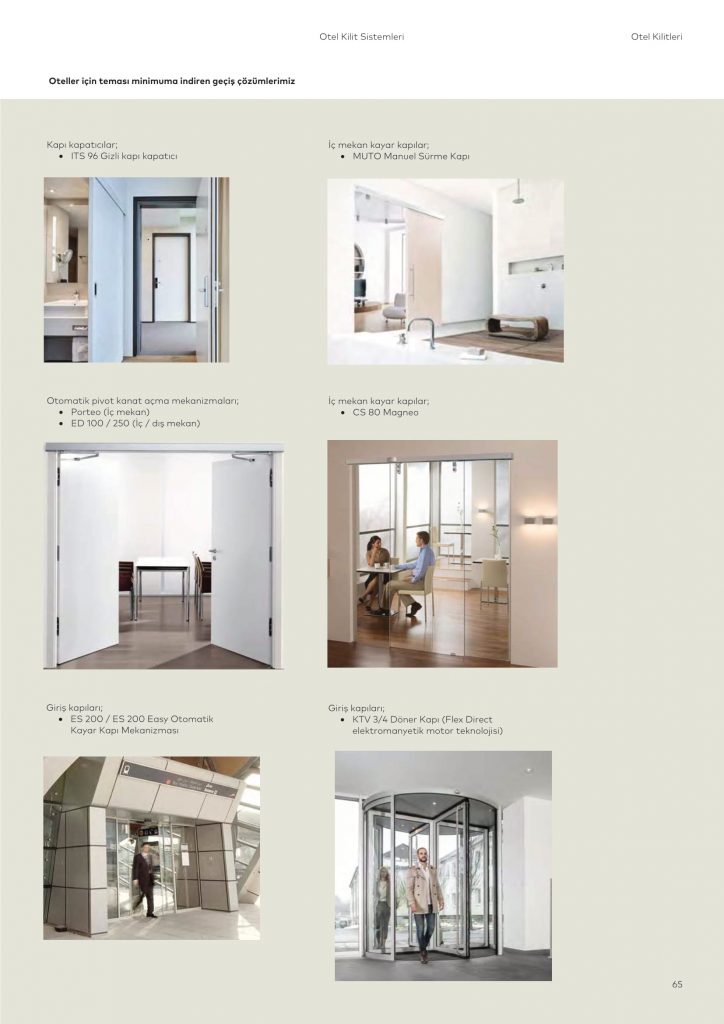
Doors used for entrances and exits are a significant part of a building, serving both functional and visual purposes. Doors establish a connection between the interior and exterior environments while creating a boundary. Therefore, doors need to be both practical and aesthetically pleasing. To achieve this, various types of doors have been developed, and one of them is revolving door systems. Revolving door systems are doors consisting of sections that revolve around a central axis. Revolving door systems offer many advantages, including energy savings, security, hygiene, and aesthetics. In this article, we will answer questions such as what revolving door systems are, how they work, their advantages, and how to choose them.
What Are Revolving Door Systems?
Revolving door systems are doors used for entrances and exits, consisting of sections that revolve around a central axis. Revolving door systems can be of two types: automatic or manual. Automatic revolving door systems are activated through sensors or buttons and operate with an electric motor. Manual revolving door systems, on the other hand, are turned by human force. Revolving door systems are typically made of glass and metal materials. Glass material provides transparency and aesthetics, while metal material offers durability and security. Gaps exist between the sections of revolving door systems, facilitating airflow and preventing pressure differences.
How Do Revolving Door Systems Work?
The working principle of revolving door systems is as follows: The sections of the revolving door are fixed at a constant angle around a central axis. This ensures that a section always opposes the entrance or exit. As a result, a continuous passage is provided for people entering or exiting. The gaps between the sections of the revolving door also promote air circulation. In automatic revolving door systems, an electric motor, activated by sensors or buttons, rotates the sections of the revolving door at a specific speed. Speed adjustment can be made in automatic revolving door systems. Additionally, emergency buttons are present in automatic revolving door systems, allowing the sections to be stopped or locked. Manual revolving door systems are operated by human force and do not allow speed adjustment. Emergency buttons are not typically found in manual revolving door systems.
What Are the Advantages of Revolving Door Systems?
Revolving door systems offer numerous advantages, including: Energy savings: Revolving door systems reduce heat loss by minimizing the temperature difference between the interior and exterior, resulting in decreased energy consumption for heating or cooling. According to a study, a building with a revolving door consumes 38% less energy for heating or cooling compared to one with a regular door. This translates to significant annual savings. Additionally, automatic revolving door systems save electricity by not operating unnecessarily through sensors.
Security: Revolving door systems enhance security by controlling entrances and exits. For instance, automatic revolving door systems can prevent unauthorized access or can be locked in case of emergencies. Furthermore, the use of metal materials provides resistance to situations like fires or explosions. Revolving door systems also protect against external factors such as noise and dust.
Hygiene: Revolving door systems maintain hygiene by preventing the entry of dust, dirt, or microbes. Especially during periods of contagious diseases like pandemics, revolving door systems reduce the risk of transmission by minimizing human contact. Additionally, they improve air quality, creating a healthy environment. Aesthetics: Revolving door systems offer a modern and stylish appearance. Glass material allows natural light to enter, creating a spacious environment. Revolving door systems can be designed in various colors, shapes, and sizes. They complement the architectural style of the building.
How to Choose Revolving Door Systems?
When selecting revolving door systems, there are some key points to consider: Door size: The size of the revolving door should be determined based on the building’s entrance area and the number of users. A revolving door that is too small or too large may not be functionally or aesthetically suitable. Typically, the diameter of a revolving door should be between 2 to 4 meters.
Type of door: The type of revolving door should be chosen according to the building’s needs and budget. Automatic revolving door systems are more comfortable and energy-efficient but can be more expensive. Manual revolving door systems, on the other hand, are cheaper and simpler but may be slower and less convenient. Door material: The material of the revolving door should be selected based on the building’s security and aesthetic requirements. Glass material is more transparent and aesthetic but can be more fragile. Metal material is more durable and secure but can be heavier. Door design: The design of the revolving door should be chosen according to the building’s architectural style and personal preference. The color, shape, and details of the revolving door can vary. For example, the sections of the revolving door can be triangular, square, or round.






